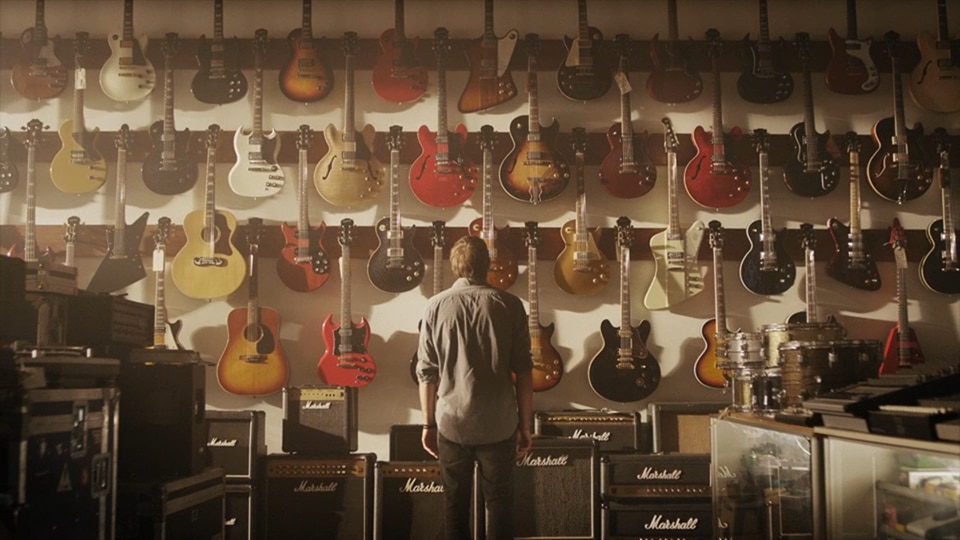Guitars! They all look so shiny and cool, and you'll want one if you're going to start your musical journey. But are they all basically the same? Which brands make quality gear? And most importantly, how much will this cost? I answer these questions for friends all the time, so I'm happy to share that advice with you. I'll tell you what you need to know to make a buying decision that's right for you -- your tastes, your musical needs, and your budget -- without slipping into too much jargon or cork-sniffery. Your guitar is out there -- let's find it!
The Basics
When you hear an electric guitar, the sound you hear is a combination of four primary elements: the pickups, the wood, the amplifier & effects, and the person playing. And as a newbie (or even an oldie), no matter what you buy or how much it costs, the weakest link is probably going to be you. Whether you learn via software, online videos, by ear, a tutor, or something else, it's going to take some time. Be inspired by your heroes and strive to make the sounds with your hands that you hear in your head, but don't worry about the subtleties just yet.
Most people are inspired to learn to play guitar because of something they hear or a band they really like. Just getting the same guitar as your hero or buying the same amp won't give you what you need to sound like them, but it's worth digging a little bit to find photos or videos of the bands that you like and noticing what kind of guitars they play. That way, when you get as far as trying to make similar sounds, your gear will hopefully be matched to the task.
Pickups & Wood
The biggest factor in an electric guitar's sound, at least for a beginner, is the type of pickups. Pickups are electromagnets that convert the vibration of a guitar string into audible sound, and different types of pickups are designed to make different sounds.
![[RS+] buy single hum](http://staticctf.ubisoft.com/J3yJr34U2pZ2Ieem48Dwy9uqj5PNUQTn/3taxgLlv37UpKBwIHnFWmp/1ee5ca0043e45fd3faf788f1bc8f0625/-RS_-_buy_single_hum.jpg)
Oval-shaped single-coil pickups offer bright, trebly sounds, while rectangular humbuckers generally sound warmer.
The thin ovals (usually with six silver magnets visible) are single-coil pickups -- one coil or wire around a series of magnets that create a bright tone with an accent on treble frequencies. These are sometimes criticized as "thin" or too harsh, and can sometimes pick up hum from other magnetic fields that might be nearby, but modern designs have helped reduce that. Single-coils are generally versatile all-rounders, but most notable for use in pop, rock, country, and essential for funk. Examples include Eric Clapton since the 1970s, Buddy Holly, Jimi Hendrix, Dinosaur Jr, Nirvana, The Smiths, Green Day...all single coils, though varying designs make some sound "thicker" than others.
The pickups that look like two of single-coils lashed together or the pickups that look like chrome rectangles with six screws on top are called humbuckers -- because they "buck the hum" that single-coils sometimes pick up. They generally offer a warmer, thicker sound and are strongly identified with the Gibson Les Paul model -- think Led Zeppelin, Pearl Jam, Guns 'n' Roses, and 60s-era Clapton, among many other examples. The fact that many metal and jazz players prefer humbuckers speaks to the pickup's versatility; you'll also hear humbuckers all over blues-rock recordings. That said, humbuckers can be criticized as "muddy" when they sound too dark, but they are great for delivering the distorted crunch of heavy rock.
![[RS+] buy knobs](http://staticctf.ubisoft.com/J3yJr34U2pZ2Ieem48Dwy9uqj5PNUQTn/6hU3YTdck0QIEpimVQ5Hf0/963c043f0c3f1caf7991405f715c965d/-RS_-_buy_knobs.jpg)
Volume & tone knobs (and the pickup selector switch) let you adjust the character, timbre, and dynamics of your guitar. If they're not marked, the volume knob is usually the one closest to the pickups.
Almost all guitars have knobs on the instrument itself so you can make the tone darker or brighter, and some guitars come with a mix of single-coils and humbuckers (two single-coils and one humbucker is pretty common). You can also switch between the pickups to create different sounds; the string will vibrate differently in different places, so the pickups that are located closer to the neck will sound different from the ones near the bridge.
And while it's a primary factor in the sounds you can create, even pickup choice is not a permanent commitment -- they can always be swapped out, and you can get humbuckers that fit in the space of a single-coil and vice-versa. Still, your ears know what you like, so trust them. Take a look at the musicians you most want to emulate; if you like their sound, make a note of whether they primarily play single-coils or humbuckers.
This is just the beginning, of course. Solidbody electrics (like the ones used most often by Kurt Cobain, Eddie Van Halen, or Billie Joe Armstrong) and hollowbody or semi-hollowbody electrics (seen in the hands of Chuck Berry, Brian Setzer and James Bay) will make different sounds even if they use the same pickups, but hollowbodies are a bit more fragile and somewhat specialized. Most new players think of a solidbody electric when they think of "rock guitar," so let's stick to that for now.
Now, we start counting beans -- check the next installment for figuring out how much you can expect to pay for your first guitar.
Dan Amrich started his music journalism career at Guitar World and Country Guitar magazines and is the co-creator of Princess Leia's Stolen Death Star Plans. He joined the Rocksmith team in 2014.
Pickup and knobs photos by Katrin Auch. Used with permission.
How to Buy a Guitar: 1 | 2 | 3 | 4 | 5 | 6 | 7
Rocksmith+ can help you learn about gear, technique, history, and much more. Join us for the next step on your musical journey.



